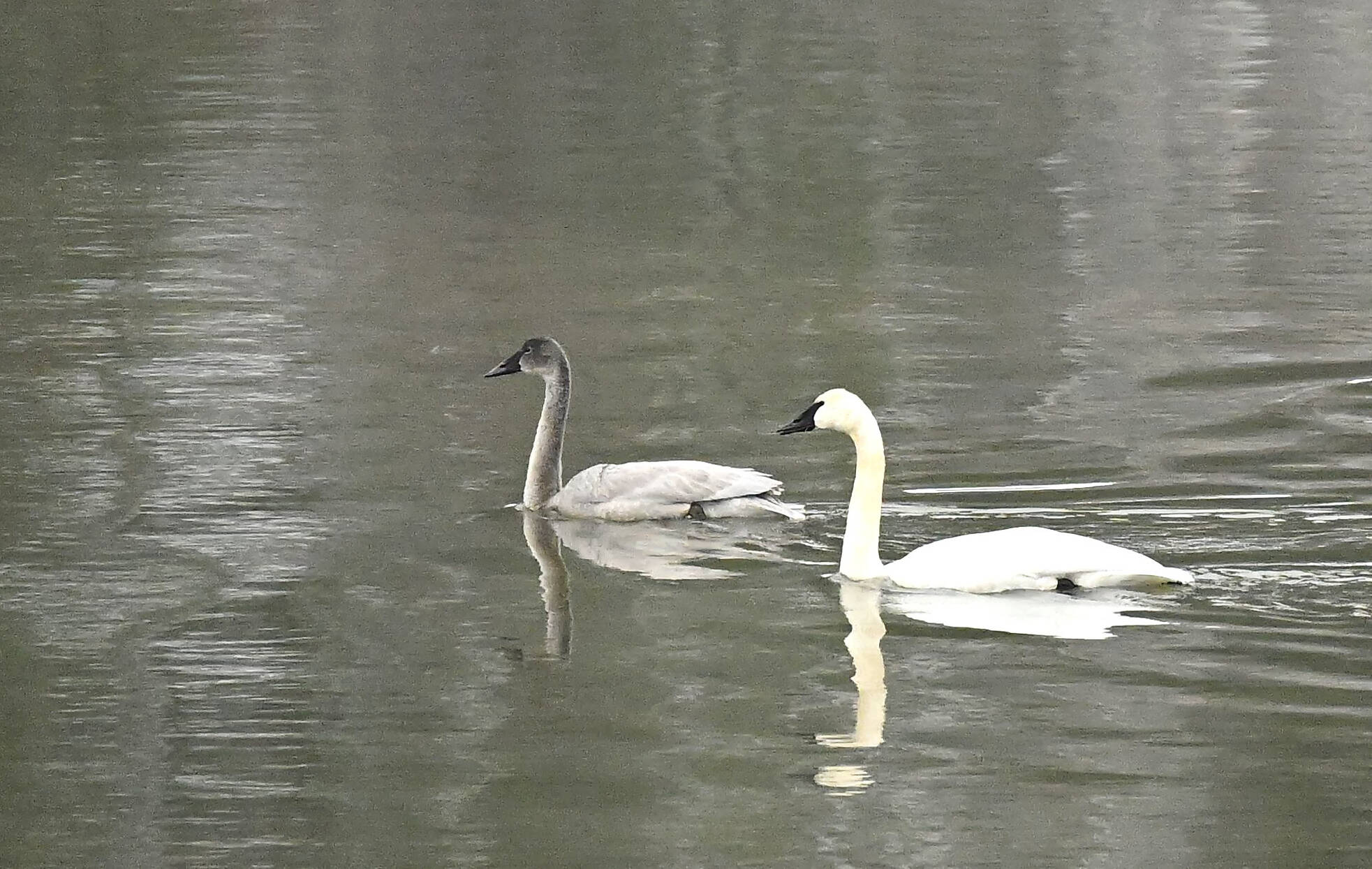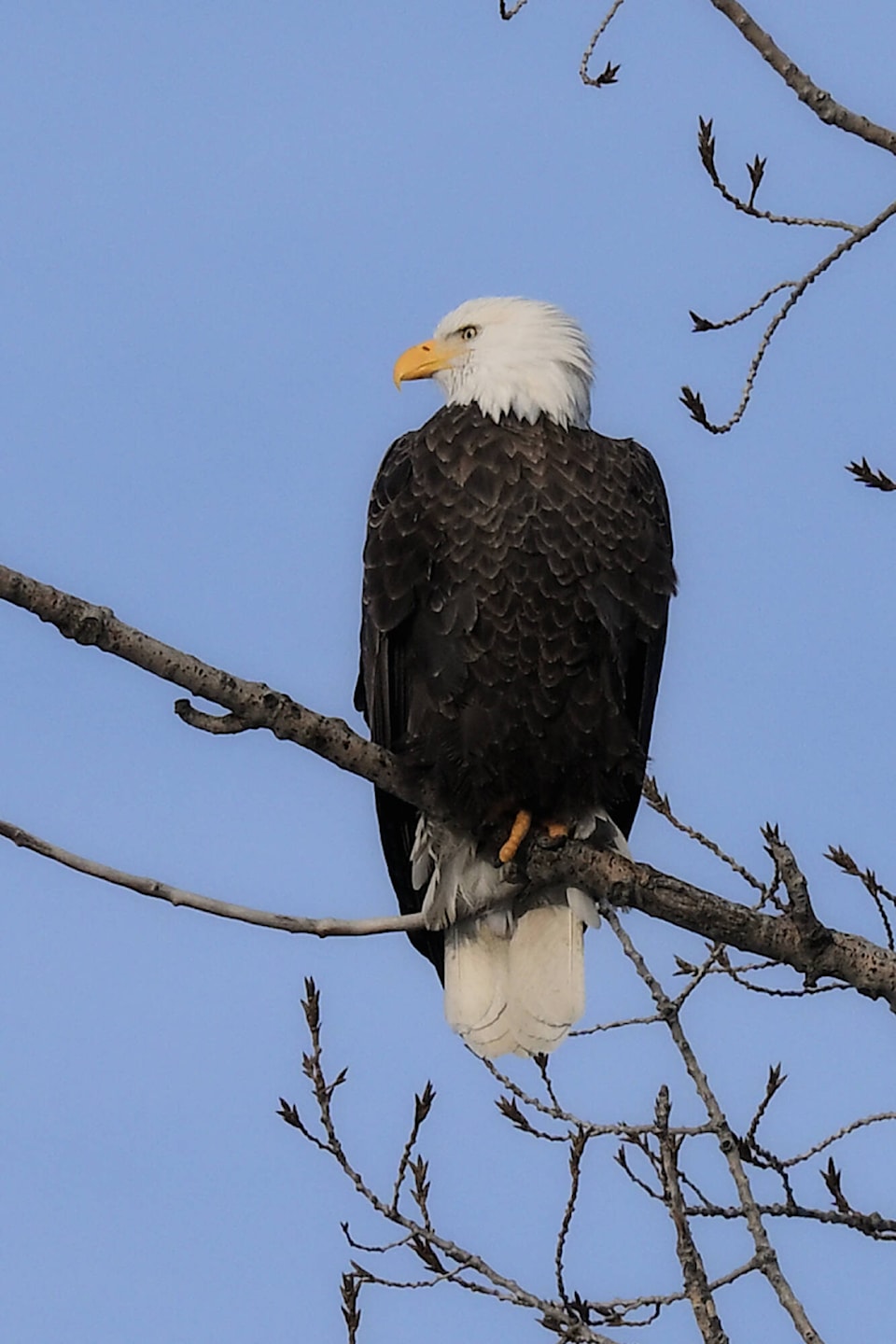By John G. Woods
Contributor
Any day you see a swan or eagle is a good day for a birdwatcher.
For a group of five local naturalists, Jan. 16, 2022, was a great day as they counted 141 of these spectacular birds between Armstrong and Mara Lake.
The same day, other groups of birders organized by the North Okanagan Naturalists’ Club tallied swans and eagles in suitable habitat south to Oyama and east to Mabel Lake.
Adding their observations, swans and eagles totalled 244 including 128 bald eagles, three golden eagles and 113 trumpeter swans.
Compared to five previous counts (2017-2021), numbers appeared steady with bird numbers only slightly down from the average, but within the range of variation seen year-to-year. Although tundra swans also winter in the B.C. Interior, none were seen this year in the Shuswap-Okanagan area. Compared to the early years of the last century, these numbers are miraculous as populations of trumpeter swans and bald eagles had been devastated across North America.
From a breeding population that once stretched across the continent, trumpeter swans were on the verge of extinction by 1900 as the giant birds were shot for their magnificent plumage.
Concurrently, bald eagle populations had plummeted due to the combined effect of indiscriminate killing and the incidental ingestion of the pesticide DDT.
Strict conservation measures stopped the killing, DDT was banned and trumpeter swans were reintroduced into their former range. The population recovery of both bald eagles and trumpeter swans is one of the great conservation stories of our time.
The Kamloops Naturalist Club started swan and eagle counts in 1974. With help from other naturalist clubs in the Southern Interior, they have been counting swans and eagles along the Thompson River system from Chase westward, and at Nicola Lake ever since.
As self-taught experts, these volunteer citizen-scientists have amassed a data set that they make freely available to wildlife agencies and researchers with the hope of helping to maintain populations of swans and eagles into the future.
If you’d like to see a bald eagle for yourself, there are still a few along the frozen shores of Salmon Arm Bay.
However, one of the best places to see both eagles and swans during mid-winter is along the Shuswap River. On this January’s count, we saw both species from the visitor centre parking lot in Enderby, and on either side of the Highway 97A bridge at Grindrod.
Farther downstream, we had wonderful views of eagles and swans from Riverside Road and along Rosemond Lake Road, where we watched a small group of eagles feeding on a large animal carcass along with dozens of common ravens and some hopeful black-billed magpies.
Read more: COLUMN: Appreciating the bird-watching bounty of Salmon Arm Bay
Read more: Waterfowl most prominent in Salmon Arm bird count
newsroom@saobserver.net
Like us on Facebook and follow us on Twitter
Sign up for our newsletter to get Salmon Arm stories in your inbox every morning.

